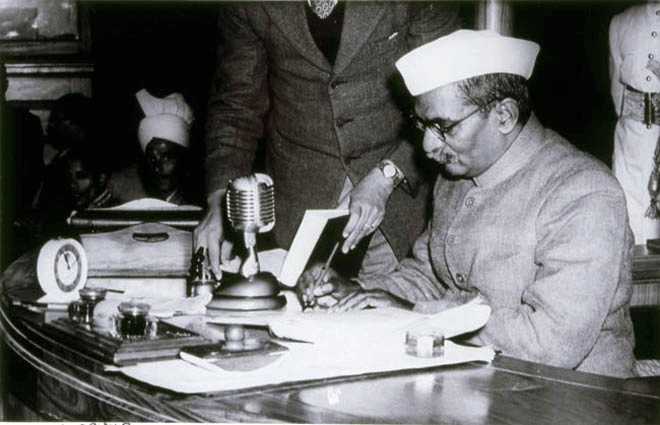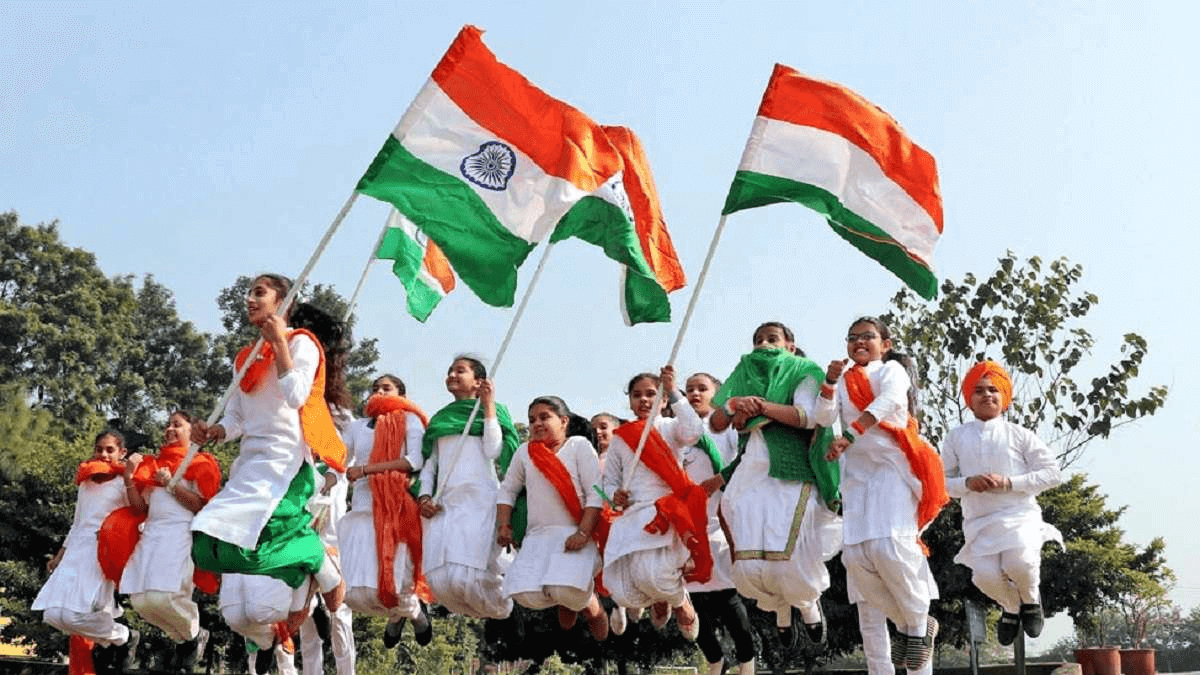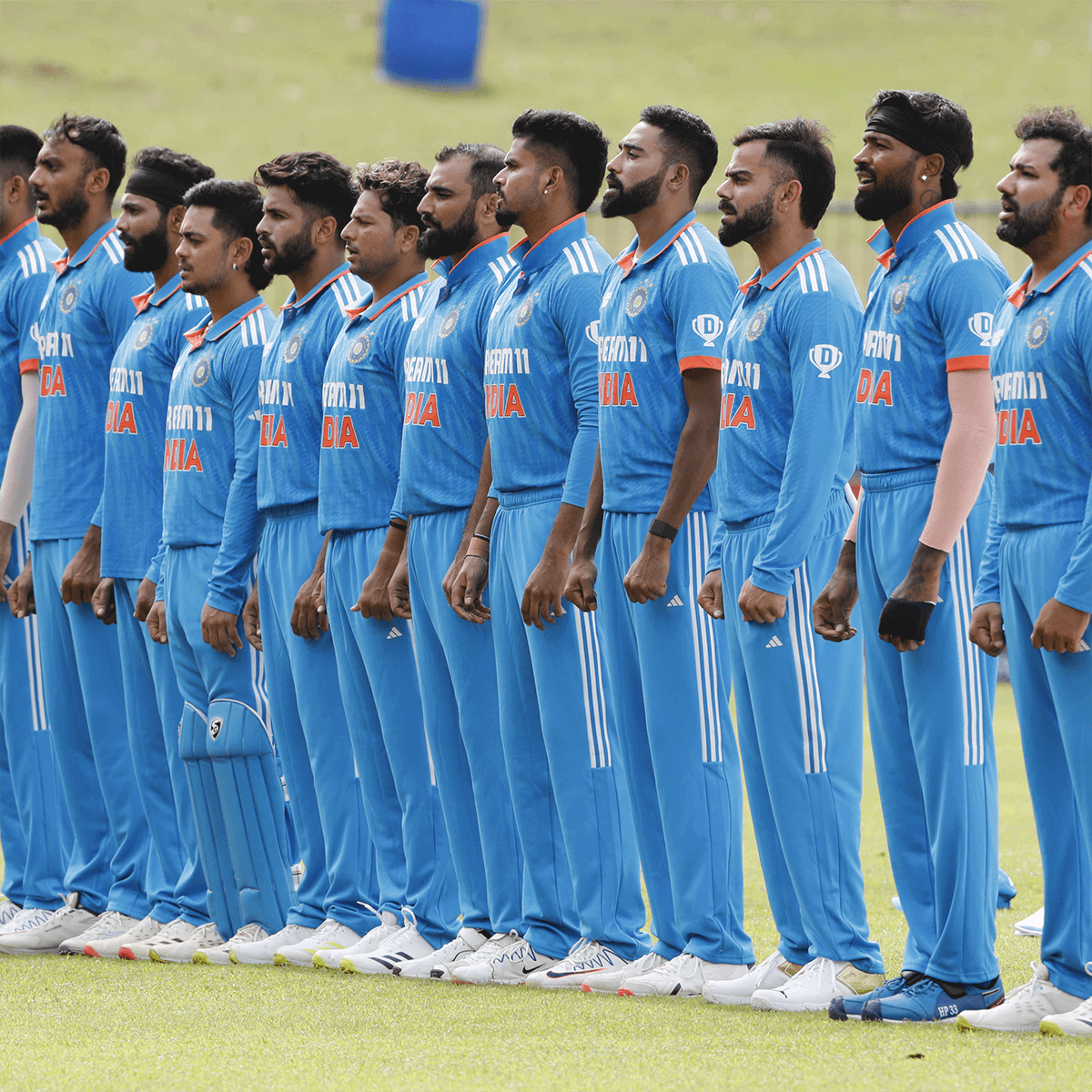The song "Jana Gana Mana," originally composed in Bengali by Rabindranath Tagore, was officially adopted as India's National Anthem in its Hindi version by the Constituent Assembly on January 24, 1950.
The lyrics of the national anthem are beautifully written in Bengali and reflect the cultural and geographical diversity of India. Here’s a translation of the anthem:
"Thou art the ruler of the minds of all people,
Dispenser of India’s destiny.
Thy name rouses the hearts of the Punjab, Sind, Gujarat, and Maratha,
Of the Dravid, Orissa, and Bengal;
It echoes in the hills of the Vindhyas and Himalayas,
Mingles in the music of the Yamuna and Ganges.
They pray for thy blessings and sing thy praise.
The saving of all people waits in thy hand,
Thou dispenser of India’s destiny.
Victory, victory, victory to thee."
The Conception of “Jana Gana Mana”

These lyrics display the undying spirit of Indians and their mutual respect for the beauty and diversity of our nature.
“Jana Gana Mana” means “The People’s Song.” It was originally written in Bengali by Rabindranath Tagore, the first non-European poet to win the Nobel Prize in Literature in 1913. The song is part of a larger work called “Bharoto Bhagyo Bidhata,” which celebrates the idea of unity within India’s diversity. It was first sung in 1911 at a session of the Indian National Congress and became an important part of India’s freedom struggle.

It was officially adopted as India’s national anthem in January 1950, shortly after India became a republic. Former leaders like Dr. Rajendra Prasad who was also India’s first president, supported the choice of this song because the poetry and flow of the song captured the essence of India’s diverse culture and helped people feel a sense of belonging.
- Sign of Unity: “Jana Gana Mana” brings together people from different religions, languages, and cultures, reminding us that we are all part of one nation.
- Patriotism and Pride: Singing the national anthem makes us feel proud to be Indian. It helps us understand our role as citizens and connect with the values of our country.
- Historical Significance: The anthem was written during India’s struggle for independence, and its adoption as the national anthem marked a key moment in our history. Understanding this helps us appreciate the anthem’s importance.
The India's National Anthem: The full version of "Jana Gana Mana" is much longer than the part we usually sing. The entire song has five stanzas, but only the first one is used as the national anthem. The full version is sung on special occasions.
Tagore’s Influence on “Jana Gana Mana”: Rabindranath Tagore, who wrote the anthem, was a remarkable person who contributed to literature, music, and art. He also composed the national anthems of Bangladesh and Sri Lanka, showing his impact on the culture of South Asia.
Not the First Choice: Before "Jana Gana Mana" was officially adopted as the national anthem, there was a debate about whether to choose it or "Vande Mataram." Ultimately, "Jana Gana Mana" was selected because of its inclusive representation of India's diverse regions and cultures.
Featured in Films: The national anthem has been featured in several Indian films, often used to evoke a sense of patriotism and unity among viewers.
Global Recognition: "Jana Gana Mana" is recognised worldwide for its beautiful lyrics and deep meaning. It has been translated into several languages, showing its universal appeal.

- Proper Conduct: Stand up and remain silent when the national anthem is played. This shows respect for the nation and its symbols.
- Understanding Its Meaning: Learning what the anthem’s words mean can help you appreciate it more and feel more connected to your country.
- Participating in National Events: Attend events where the anthem is sung to strengthen your sense of belonging to the nation and take pride in being an Indian.
Conclusion: A Song that Transcends Borders

India’s national anthem, “Jana Gana Mana,” is a sensation of its own that invokes love, camaraderie and a sense of belonging in the hearts of all Indians. From a very young age, the national anthem tends to become an extension of our identity and exudes positivity and pride.
As you continue on your academic journey, may you carry the spirit of unity, pride, and patriotism that the anthem represents.
© Knowledgeum
